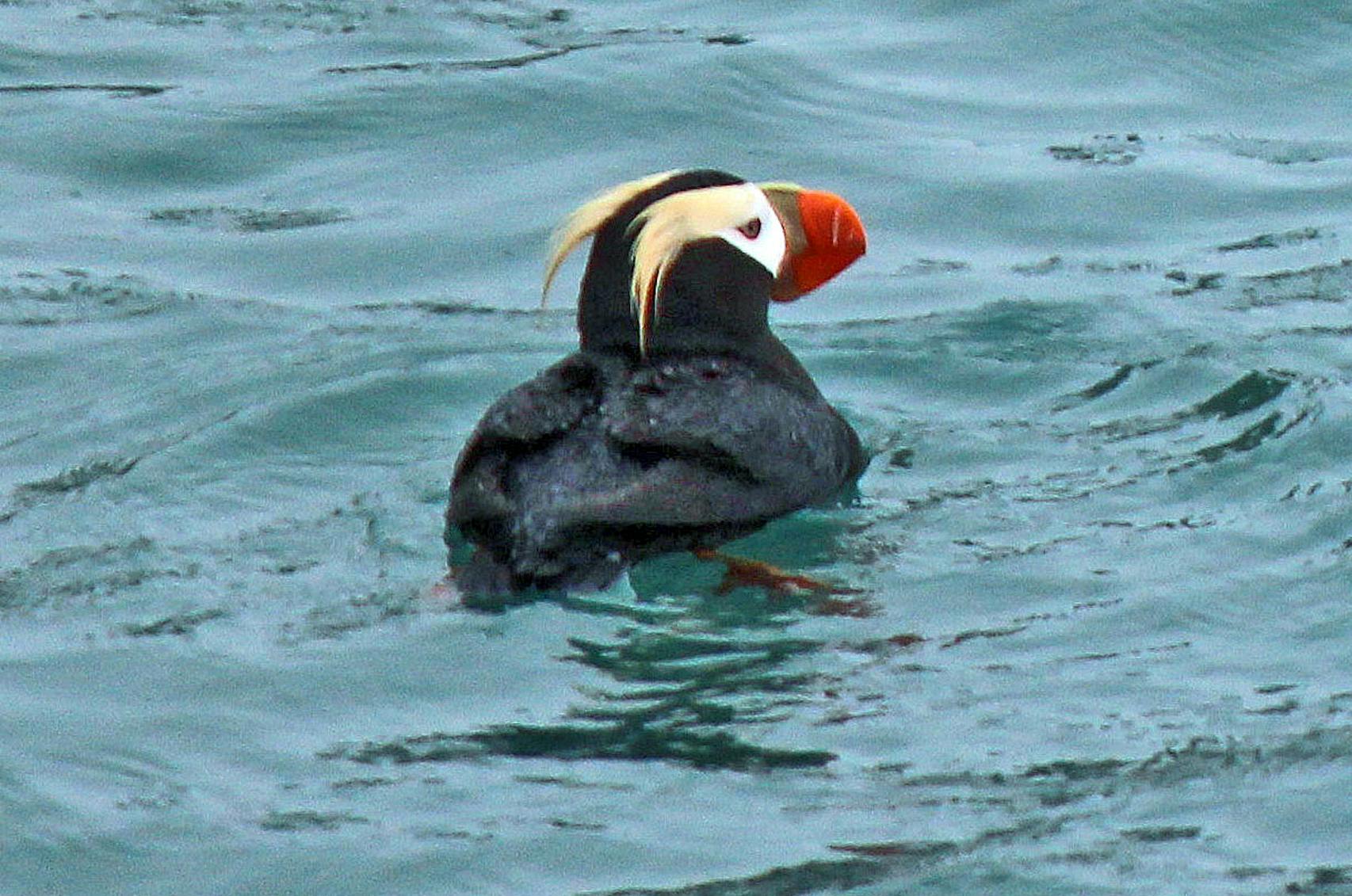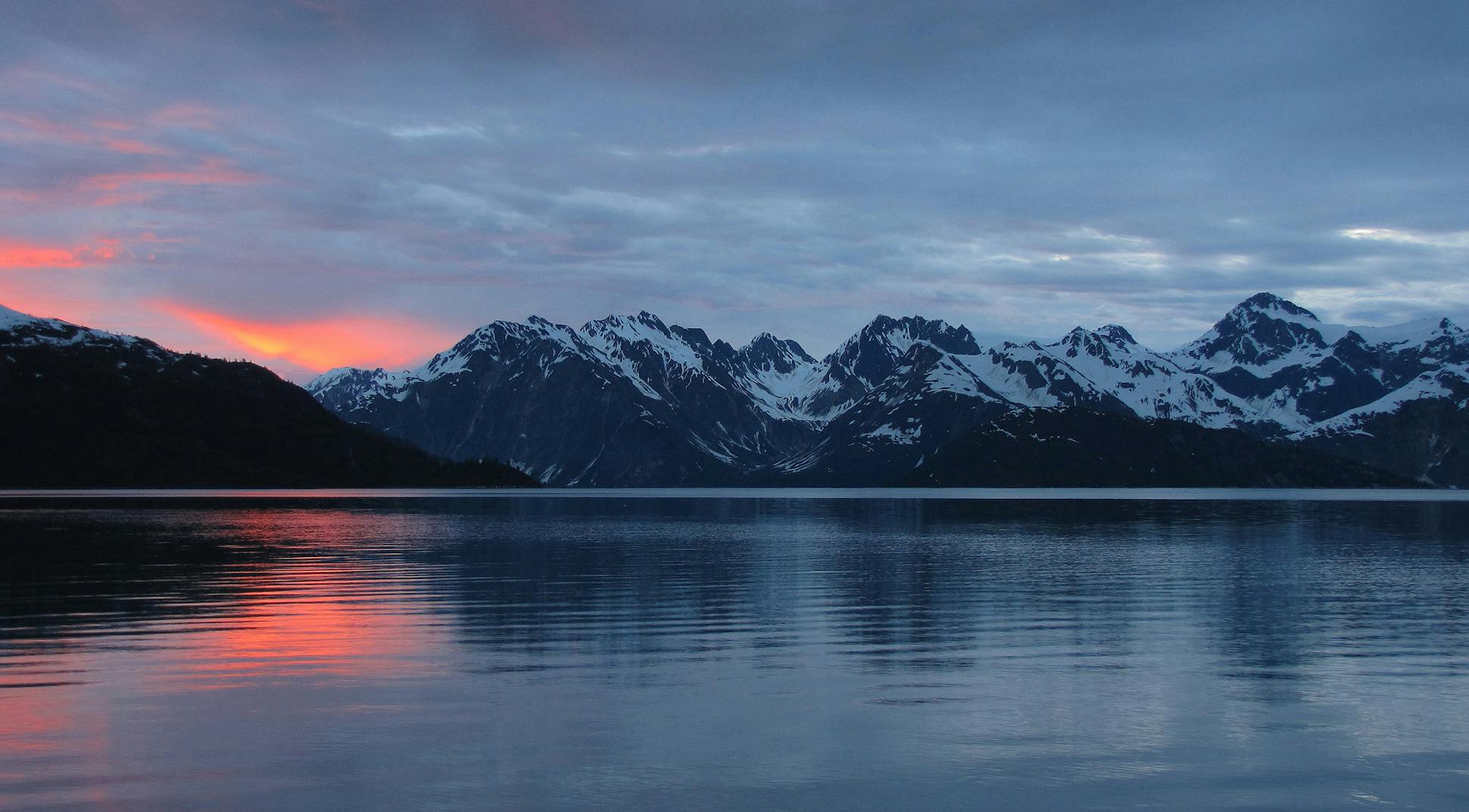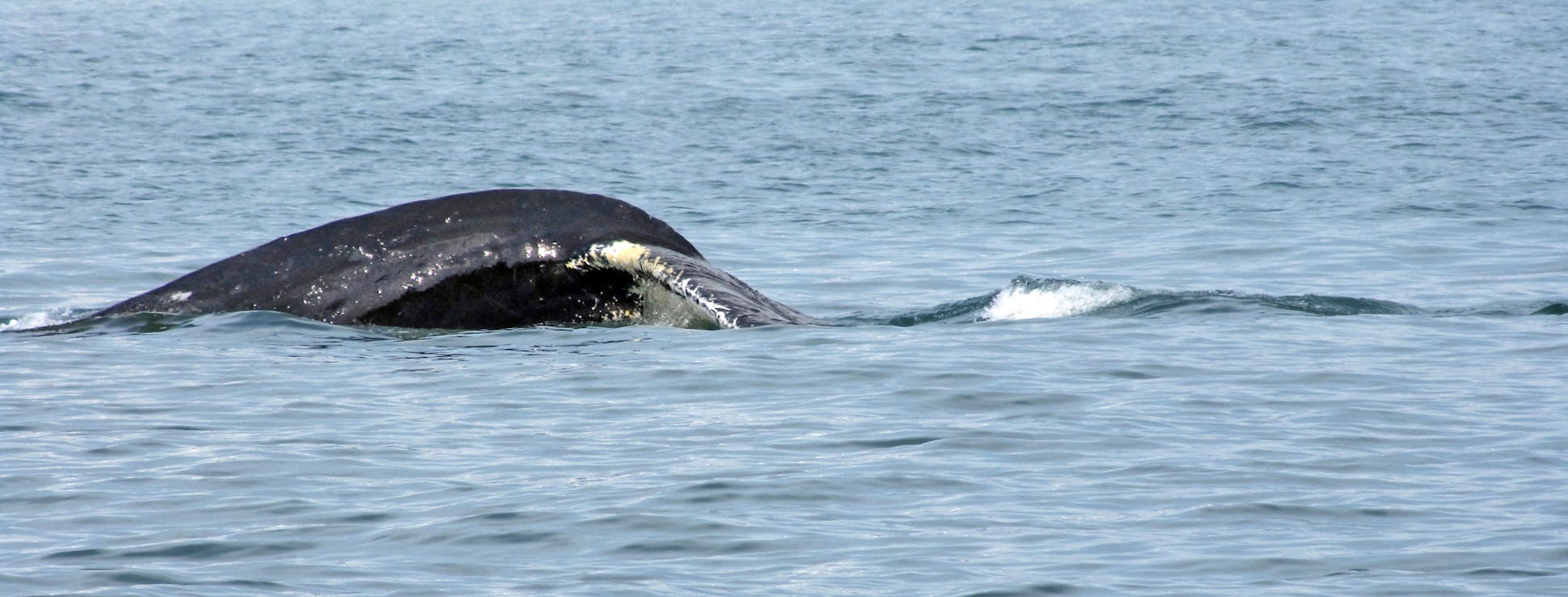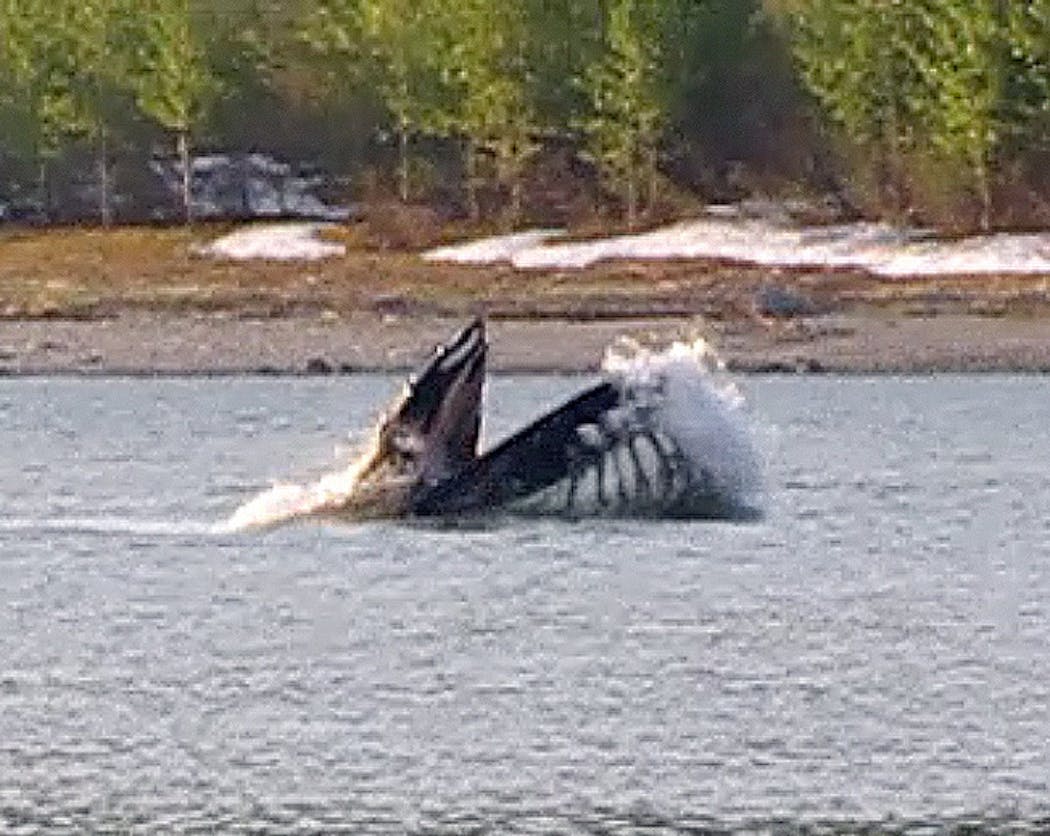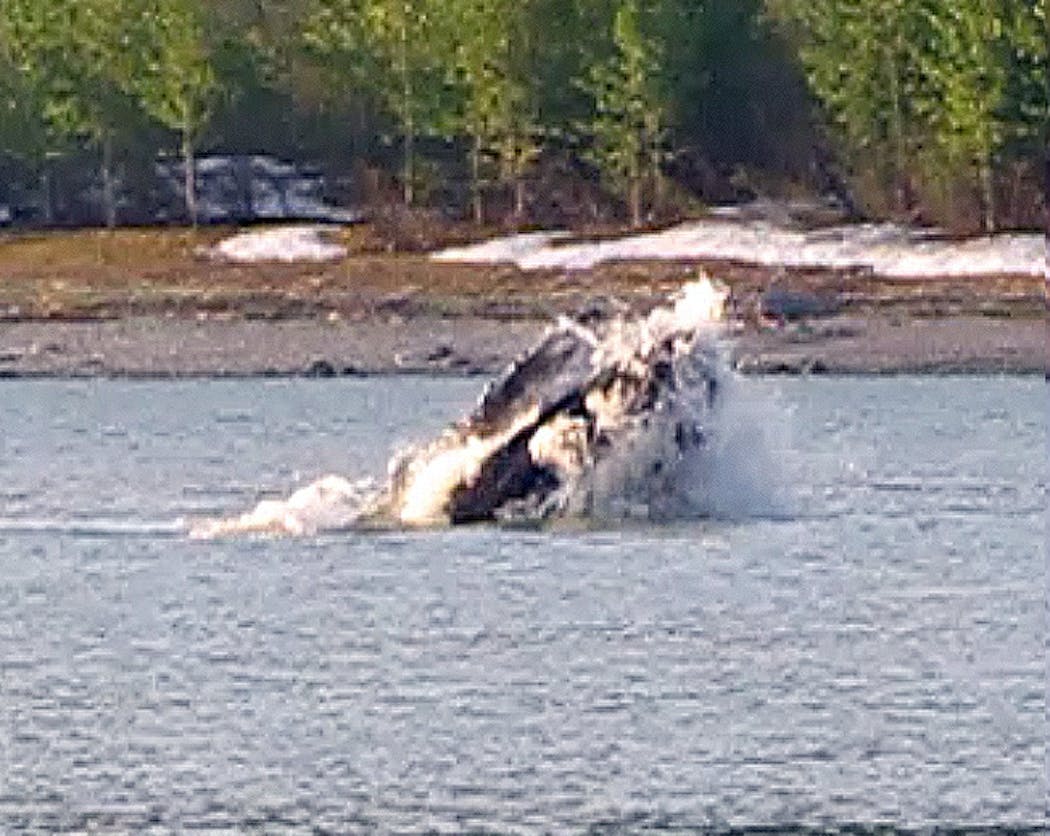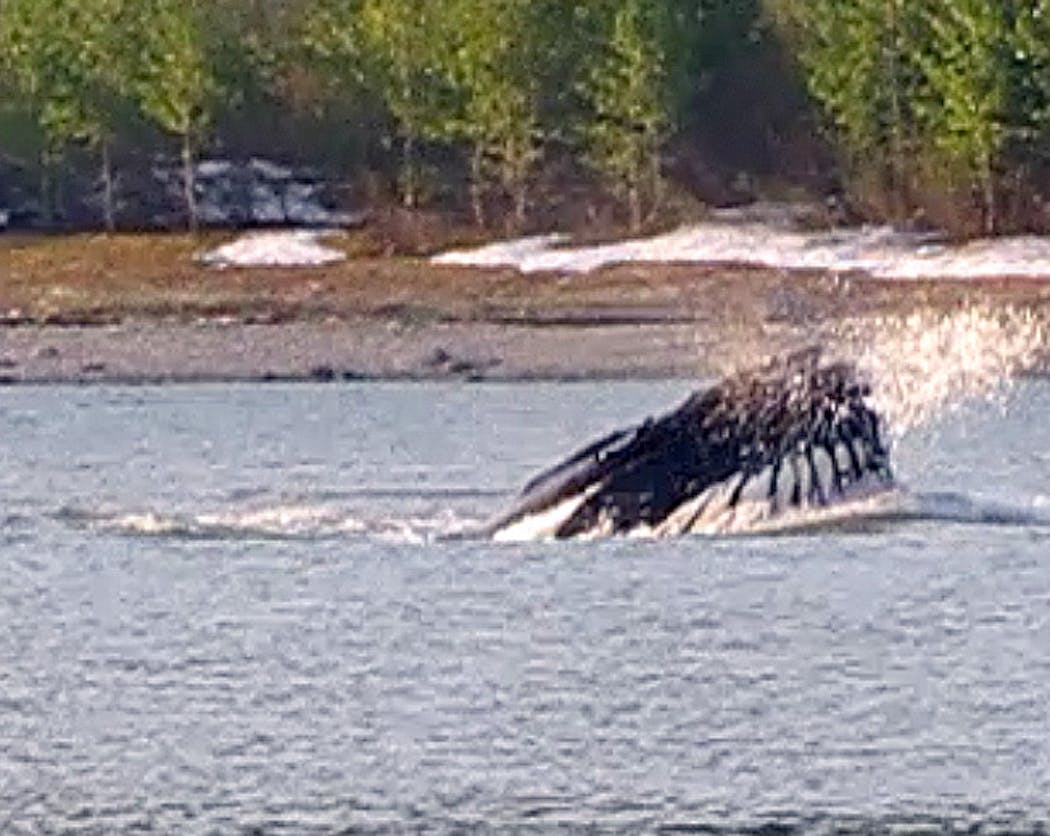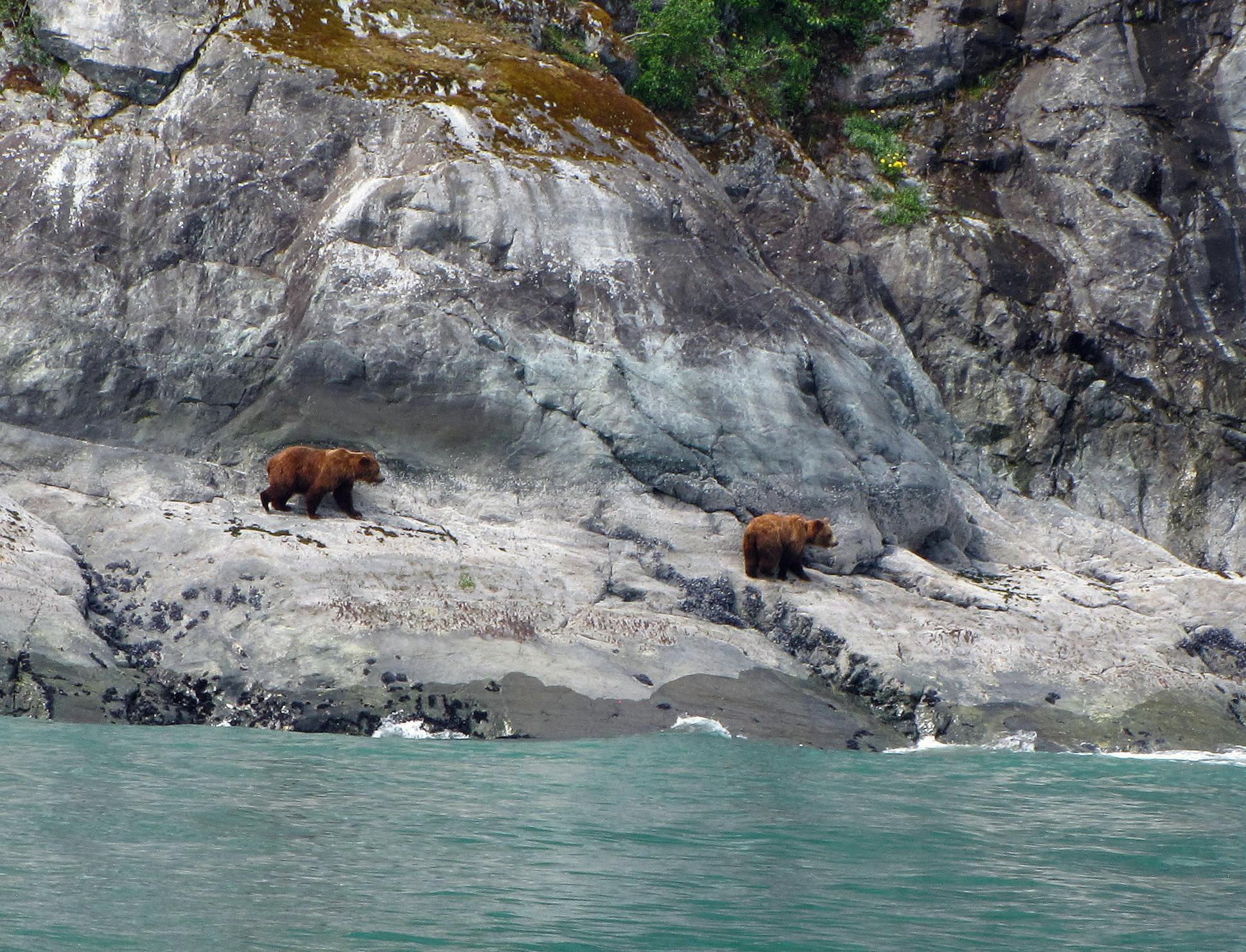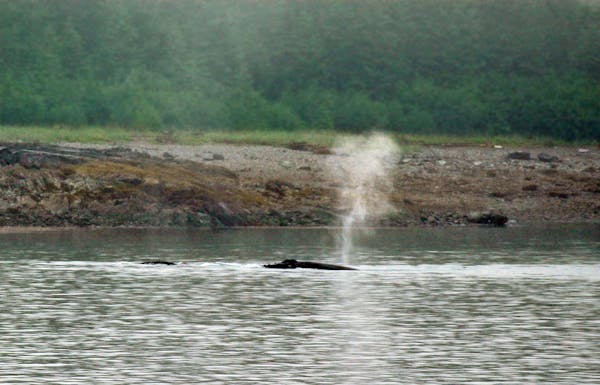GLACIER BAY NATIONAL PARK, Alaska – A giant, hollow breath, deep as a crevasse, breaks the predawn quiet.
Just off the lip of the shallow, rocky beach where my tent is pitched, a 40-ton behemoth is feeding at 4 a.m. The flat brightness, a civil twilight, looks like the same light I fell asleep to the night before.
The next exhalation sounds like it's 10 feet away. I unzip my rainfly just in time to see the dissipating spume as the humpback moves on, leaving a squabble of seabirds in its wake.
Less than 12 hours before, my coworker Lewis Leung, his partner, Ruby Tam, and I had pulled into a tiny cove after a grueling, 3-mile paddle up the coast into a stiff headwind and against a powerful ebb tide. We pitched our tents in a bed of egg-sized rocks, ate dinner in the intertidal zone and fell into an exhausted sleep by 8 p.m.
We had spent months preparing for this trip: reading maps, studying tide charts, practicing "wet exits" from our kayaks on Lake Nokomis.
But the first hours of our trip revealed a truth about Alaska: It's a landscape wilder and more unpredictable than anything in the Upper Midwest.
A shrinking window
Remote and rugged, full of snowcapped mountains and calving glaciers, prolific marine life, mountain goats and grizzly bears, Glacier Bay is the quintessential Alaska landscape to many visitors.
As a seasoned Alaska traveler, I was used to the supersized landscape — like the mountainous U.S. West on steroids — and the casual wildlife encounters that mark life in our second-to-last state. But I hadn't considered a trip to the Inside Passage until a series of warm winters, and the reappearance of the marine heat wave known as "the Blob," made me realize my window for a close encounter with the state's glaciers might be shrinking.
Glacier Bay National Park and Preserve is part of a 25-million-acre World Heritage Site, and like much of southeast Alaska, accessible only by boat or plane. Two cruise ships a day are allowed into the bay itself — along with a tour boat run by the National Park Service that picks up and drops off kayakers and backpackers at designated points.
The previous summer, Ruby and Lewis had taken the Alaska state ferry from Juneau to Gustavus, then spent a night at Bartlett Cove before taking the Park Service day boat around the bay. The weather was stormy, not unusual in a region that annually gets more than 70 inches of rain. But when two groups of kayakers came aboard the Park Service boat in the rain, they were "glowing," Ruby said.
Back in Minnesota, they began planning a return trip.
By air or by sea
My first glimpse of the region comes on my Alaska Seaplanes flight from Anchorage to Gustavus. The tiny Cessna soars through lush boreal valleys and skirts so close to mountaintop snowfields, I can almost brush them with my hand.
From Gustavus, it's a half-hour shuttle ride to Bartlett Cove, through a settlement with one vintage gas station and no stoplights. The town is less a platted grid than a scattering of buildings across several crossroads.
Ruby, Lewis and I meet up at Glacier Bay Lodge that afternoon and run through a series of last-minute preparations. We attend a Park Service orientation and check out our mandatory bear canisters; at a separate meeting with a local outfitter, we claim our sea kayaks. We also need bear spray, but a taxi back to town is $30 per person, so we decide I will run that errand solo.
En route to the general store, my driver, Crystal, describes watching a sow grizzly teach her cubs to hunt spawning salmon in the small stream we cross. She tells me about stitching seasonal jobs together and checking on relatives as she navigates her braided white and Native heritage in this Huna Tlingit homeland.
Tall hemlocks and Sitka spruce line the two-lane roads, creating deep, green tunnels with snow-capped mountains at every end. On this rare sunny day, it's a soaring sight but I can imagine in a long winter how the dripping forest would press in.
Into the wild
Early the next morning, we trundle our gear and kayaks to the ferry dock. Stuffed into my wetsuit and rain gear, I'm a ball of nerves, thinking of everything that could go wrong.
As we travel up the east arm of Glacier Bay, we see colonies of Steller sea lions sunning on rocky ledges; flocks of puffins skimming the water; sea otters rafting in the middle of the bay. Humpbacks breach and spout next to the boat. Brown bears, solo and in pairs, lope along wide beaches, looking for a post-hibernation snack.
Our fellow passengers ooh and ahh, then swing their gaze to us. Are we sure we want to spend four days alone in this wilderness?
Sixty-five miles into the bay, our boat sidles up to Margerie Glacier, a mass of folds and buttresses flowing directly into saltwater. The boat idles next to the ice wall as a column collapses at one end in a shower of snow.
Farther down, at Lamplugh Glacier, we see light on immense ribbons of eerie blue, valleys of black debris and a field of ice "floaters" blocking a closer approach. As we make our way along the steeper, snowier west arm of Glacier Bay, I'm relieved to count only one brown bear several miles from our dropoff at Scidmore Cut.
By 2 p.m., the day boat has pulled away, leaving us and our gear in a heap on the beach.
A parade of whales
The first humpback spouts 50 feet behind Lewis' kayak as we are making our way up the coast.
We are fighting waves and wind, inching past sheer cliffs of vegetation that plunge into waters 200 to 600 feet deep just feet from the water's edge. Three hours later, we collapse at the next beach, a rocky cove bordered by chattering mountain streams.
All evening, humpbacks cruise through our cove.
We hear an exhalation as Ruby heats water in our tiny camp stove for dinner. An impatient whoosh as we swallow our freeze-dried meal. The rubbery tingle as a massive set of lungs fills with air. Alone and in twos and threes, humpbacks drive small fish against the dropoff, open their giant, ventral pleats like an accordion and scoop up a meal.
The whales move on, but the cove remains our home for the next three nights. Lewis follows the daily drama of a nesting oystercatcher pair. A wide-eyed harbor seal checks on us several times a day. I spot the dark, triangular fin of a harbor porpoise. Each night, we hear the fluting call of hermit thrushes in the thick alder tangle above our tiny beach.
A near bear encounter
Our goal had been to kayak north to Reid Glacier, an 11-mile paddle up the coast. Ruby hoped to swing past the seal nursery on the icebergs near Johns Hopkins Glacier.
Twice we attempt to advance up the coast; both times wind and waves beat us back.
On Day 3, I throw in the towel. The ocean has humbled me; my kayak skills are no match for the chop, where a single rogue wave in 45-degree water could spell disaster. We decide to return to Scidmore Cut, where Lewis and Ruby will camp a final night without me.
The next morning, we wake to a light drizzle. The wind has finally died down and clouds of blackflies pepper any inch of exposed skin. Paddling south is so smooth, we overshoot our dropoff by more than a mile. Luckily, Ruby checks her GPS. The coastline is almost featureless in the gloom.
I have never been happier to see a boat than the Park Service ferry materializing in the rain.
Ruby and Lewis return to Bartlett Cove the next day, after a final close call of their own: They had spent a quiet night near Scidmore Cut, camping in the rain. In the morning, two backpackers passing through mentioned a bear sighting a half-mile away.
They packed camp and hauled some of their gear over a rocky stretch of beach to the dropoff. Realizing they were running out of time, they hastily loaded the rest of their gear in the double kayak and paddled up the coast, just as the day boat came into view.
"When we got there, everybody jumped down from the boat," Ruby said. "Usually one guy comes down the ladder. But four to five guys came down. Everybody said, 'Quickly, let's go, let's go.'"
Everyone was quiet on the boat, until a deckhand supervisor clued them in: While Lewis and Ruby were racing to meet the boat, passengers saw a bear roaming the beach.
"People thought we were trying to paddle away from the bear," Ruby said. "But actually, we are just trying to catch the boat!"
Months later, Lewis, Ruby and I can laugh about our mishaps — and they're even discussing another trip.
But a part of me remains on the water: eye-level with whales, sliding past snow-capped mountains, realizing a tiny fiberglass craft is all that keeps me from the ice-cold depths of Glacier Bay.
Trisha Collopy is a Star Tribune copy editor.
If you go
Getting there: Glacier Bay National Park and Preserve is accessible by cruise ship, the Alaska Marine Highway System and flights to Gustavus from Anchorage and Juneau by Alaska Seaplanes and Alaska Airlines.
Lodging: The Glacier Bay Lodge at Bartlett Cove operates from late May to September. Rooms start at $270 a night. The National Park Service also offers a free campground next door to the lodge.
Outfitters: Glacier Bay Sea Kayaks offers rentals ($60-$75 per day) and day trips in Bartlett Cove. They also rent boots and rain gear. Alaska Mountain Guides and Spirit Walker Expeditions run guided multiday kayak trips.


